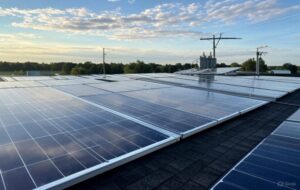Over the last few weeks, strange and unsettling weather phenomena have sparked concern and curiosity across the United States. In Florida, residents have reported a mysterious fog blanketing the region, accompanied by a burning chemical smell and reports of respiratory and gastrointestinal illnesses. Meanwhile, in Pennsylvania, a bizarre snow event has people claiming the snow doesn’t melt, burns instead, and feels like styrofoam. While each of these phenomena is peculiar on its own, their simultaneous occurrence raises pressing questions. Is there something more to these events than meets the eye?
Let’s examine the details, dive into potential explanations, and consider the broader implications of these unsettling reports.
Florida’s Fog: A Mysterious and Sickening Haze
Residents of Florida have experienced a dense fog in recent weeks that defies expectations. Described as having a strong chemical odor, the fog has left many feeling unwell. Reports from affected areas include symptoms such as irritated eyes, coughing, sneezing, and even nausea and stomach cramps. Social media and local news outlets are awash with first-hand accounts, and speculation is rife.
Meteorologically, fog is simply water vapor condensed near the ground, typically harmless. But what makes this fog unusual is its reported smell and health effects. Could it be the result of industrial pollutants mixing with atmospheric conditions, or perhaps something more deliberate? In the past, weather phenomena like “acid rain” were linked to industrial emissions. Could we be seeing a modern, more sinister variant?
Theories abound, from chemical testing gone awry to biological agents. Some suggest this could be part of a geoengineering experiment—projects aimed at controlling or modifying weather patterns. Historically, programs like “Operation Popeye” during the Vietnam War show governments are not above altering the weather for strategic purposes. Could Florida’s fog be a similar experiment, but on a much larger, and potentially accidental, scale?
Pennsylvania’s “Fake” Snow: A Styrofoam-like Mystery
In Pennsylvania, reports of “fake snow” have added another layer of intrigue to the weather puzzle. Residents claim that the snow behaves unusually—it crunches, refuses to stick together, and doesn’t melt like normal snow. Some have even posted videos of this “snow” catching fire, leading to viral accusations of synthetic or engineered material falling from the sky.
Skeptics might chalk this up to graupel, a type of snow pellet formed when water droplets freeze onto snowflakes. Graupel can sometimes feel and look different from typical snow. However, this explanation doesn’t satisfy everyone. Videos showing burning snow certainly don’t align with natural processes.
Is this an isolated incident, or part of something broader? Historical reports of burning snow in places like Georgia and Canada from as far back as 2014 suggest this isn’t entirely new. Could this point to a larger, ongoing phenomenon—possibly linked to geoengineering or atmospheric tampering? If so, why does it appear sporadically, and why now in Pennsylvania?
A Coordinated Phenomenon or Coincidence?
While the fog in Florida and snow in Pennsylvania seem unrelated at first glance, the timing and unusual characteristics of these events give pause. Both share elements of suspicion and defy conventional explanations, leaving room for conspiracy theories and deeper investigation.
One potential connection is the idea of widespread atmospheric tampering. Geoengineering projects, such as spraying reflective particles into the atmosphere to combat climate change, could potentially have unintended side effects. For example, particles used in such experiments might interact with weather systems, creating abnormal fog or affecting precipitation. This leads us to ask: are these weather phenomena the byproducts of clandestine projects?
Another possibility is industrial contamination. In Pennsylvania, local industry or mining could have released particulates into the air that altered the snow’s chemical composition. In Florida, the fog could be the result of emissions from agricultural or chemical facilities reacting with atmospheric conditions. But if these are isolated industrial accidents, why the silence from authorities?
The Role of Media and Public Perception
It’s important to consider how these phenomena are being portrayed—or ignored—by mainstream media. When strange weather events occur, they are often quickly dismissed with convenient explanations that quell public curiosity. Historically, however, rapid media narratives often serve to deflect attention from deeper truths. Could this be another instance of misdirection?
For example, during past environmental crises, governments have downplayed or concealed the extent of the problem to avoid public backlash. If Florida’s fog and Pennsylvania’s snow are symptoms of larger environmental or technological issues, a swift dismissal by the media might be part of an effort to maintain calm.
What This Means for Us
These events highlight a broader trend: as humanity delves deeper into controlling and manipulating natural systems, the unintended consequences are becoming harder to ignore. Whether it’s geoengineering, industrial contamination, or something even more covert, the impact on human health and the environment is undeniable. For the average person, these phenomena serve as a wake-up call to question the systems and decisions shaping our world.
Individually, these weather anomalies might be explainable. Together, they paint a picture of a world where natural processes are increasingly influenced by human activity—and where transparency is sorely lacking. As a society, we must demand better explanations and accountability from those in power. After all, when the weather itself becomes suspicious, it’s time to start asking hard questions.
What do you think? Are these events isolated, or do they hint at a deeper, more complex story? Let’s discuss.



